I Wanted to Be Wrong About the Notre Dame Restoration
Plus, Airbnb's first reward program, United tosses loyalty aside, onsens running low on water, Bjarke Ingels design for Bhutan, and Hvar's party crackdown.
I swear I’m not a hater.
I was ready, hopeful even, to eat my words regarding the Notre Dame restoration. But having gone in person this week to see it, my fears were confirmed.
To visit now is a relatively painless process. You can either wait in line or book for free up to a couple of days in advance on this website. Ticket in hand, I went on Tuesday and felt pretty giddy.
The first thing that I noticed upon walking through the doors had nothing to do with the church. It was jam-packed. An absolute crush of people, many of whom were walking around with their phones held up to their faces continuously recording everything they saw. If one measure of the success of the renovation is that more people are coming, well, so far they are.
There is much to love about the restored Notre Dame. All of the stained glass positively sparkles. The artwork in the side chapels, often so gloomy and hard to admire before, is now easy to see and take in.
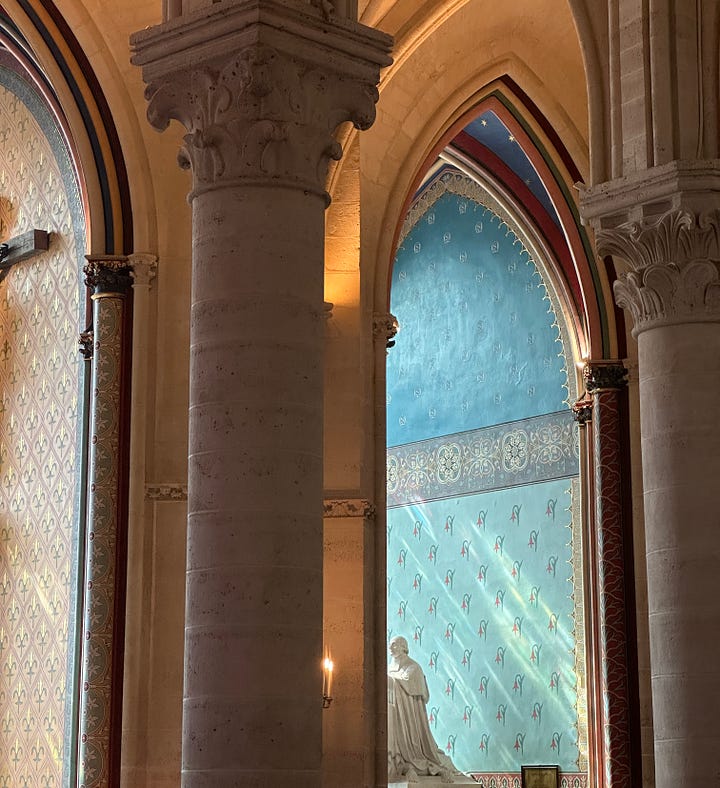
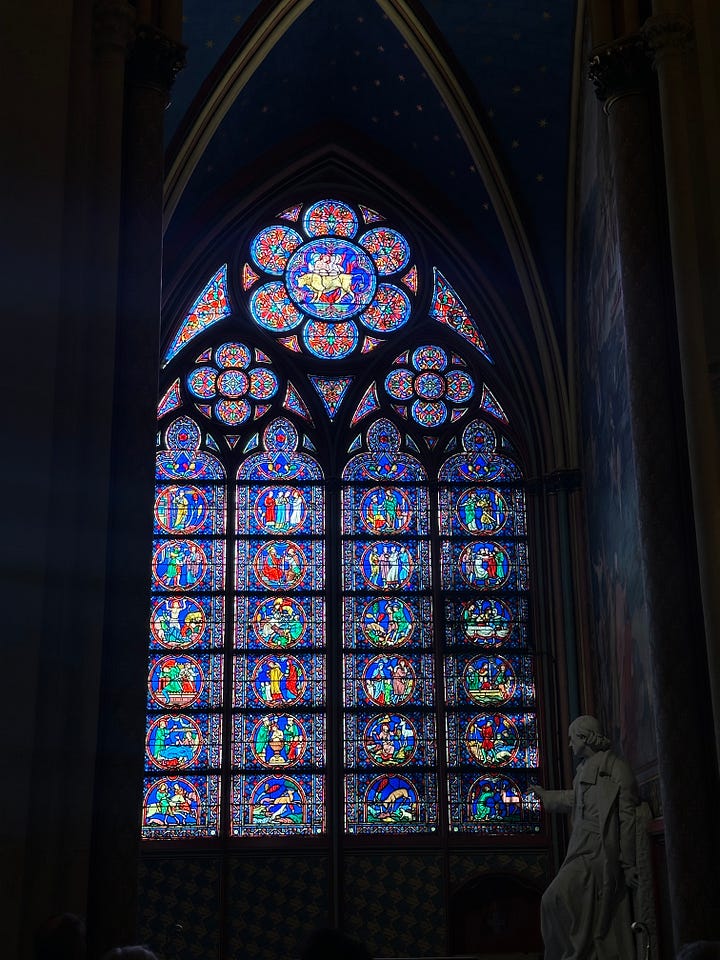
But the pictures released months ago did not lie—it does in fact look like an LVMH takeover. It is too bright, too clean, too new.
It turns out the main issue was not the cleaning (although I will quibble with that in a bit), but the lighting. If you go, train your gaze to the middle section of the sides of the church interior—the triforium. Part of the glory of Notre Dame is how innovative architecture allowed it to be lit naturally, yet this section is unnecessarily and aggressively illuminated by artificial means. And the light chosen is cold and direct, in direct contrast with the diffuse and warm light one is accustomed to in Gothic churches during the day.
Look at the picture below. Why not let the wonderful light from the stained glass do the work and not mar it with the haunted house-type stuff on the gallery columns?
To perhaps better illustrate by means of contrast, go one day to the underrated church of Saint-Etienne-du-Mont, right near the Pantheon. One of my favorite places in Paris, its jube (rood loft) with elaborate spiral staircases remains a breathtaking sight. The stones of this church have relatively recently been cleaned and restored, so there is none of the soot or grime that folks aghast at Notre Dame’s cleaning have romanticized. But most of the heavy lifting when it comes to light is natural, which allows it to retain an ancient feel.
Instead, what that intense lighting of Notre Dame has done is left the restoration vulnerable. In such unforgiving illumination, the painstakingly restored gold-plated chandeliers resemble something you’d mock in a dictator’s palace. Worse is what it does to the stone vaulting and general impression of the interior decoration.
Outside, Notre Dame’s impressiveness is easily grasped. There are those flying buttresses, which remain more mind-boggling and bewitching to me than anything architects working with contemporary building materials have pulled off. Add in the statues and detailed stonework and there is no doubt of its splendor and significance.
Inside, though, Notre Dame’s distinction is less readily seen. There are dozens of Gothic churches with more stupendous interiors—whose ceilings seem to more openly defy the powers of gravity or whose details reach the pinnacle of what a human with a chisel can achieve. Notre Dame’s calling card isn’t so much what it looks like inside (aside from the rose windows), but what has happened here. Whether because of political, spiritual, or pop culture events, even St. Peter’s in Rome might not have as much cultural cachet as Notre Dame. When you walked in here before the fire and restoration, that history was palpable. You knew you were walking and praying in a place that was a step above your local church. Those darkened stones had seen Napoleon. Now, though, it looks like any number of a dozen newly-minted Gothic Revival churches across the Midwestern United States.
One of the most common rejoinders to my column a few months ago was that a cleaned Notre Dame meant you get to see Notre Dame as it was intended. Let’s put aside the flawed logic of seeing historic works as they were originally made rather than found (should we paint all the Greek statuary?!) and that some particularly hideous contemporary liturgical furnishings have been added (that new baptistery is a choice) as part of the restoration. I would happily accede to the idea that this should be the approach to the church now that what’s done cannot be undone.
So, let it stand on its own, and get rid of all the excessive artificial light.
DEPARTMENT OF GRIEVANCES
You should not be loyal. That is something that almost everybody in the credit cards/frequent flyer game has been saying for a while now, and it bears repeating with the announcement this past week that United Airlines and Chase are enacting a big increase in yearly fees for their credit cards. The Explorer card, for instance, will go from $95 a year to $150. This is already after United put in place big increases a couple of months ago in the requirements for reaching status levels. On top of that, the airline also issued new changes to its clubs this week, removing guest privileges and roughly doubling the cost of membership.
Safe to say, don’t go in tourism submersibles, or at least not when you haven’t done thorough research on the safety regulations required in the country. On Thursday, six people died when a tourist submarine in Hurghada on the Red Sea sank. The submersible offered 40-minute underwater tours with large windows to give views to passengers. Photos of the vessel and the experience can be seen on TripAdvisor.
As the ramifications of the poorly rolled out Expedia One Key continue to unfold, Airbnb is introducing a loyalty program that is reminiscent of the once-beloved one Hotels.com had at Expedia. It’s a bit convoluted, but basically, if you book hotels through its sister site HotelsTonight, 10% of the booking goes to a credit on Airbnb. Best of all, the companies say this is not planned as a short-term promotion.
Not quite sure what I think of this new Kengo Kuma cafe in Fukuoka, Japan that he wrapped in mesh netting, but I do want to check it out:
Every time I go to London, I have only one requirement—Indian food. So I understand the excitement when it was reported this week that one of the more legendary contemporary Indian restaurants in London—Dishoom—is looking at opening an outpost in New York City.
I’m skeptical of the value of RyanAir’s just-announced membership program. Called Prime (yup), it costs €59.99 a year. Members get priority boarding and free seat selection. However, it doesn’t come with any discounts, points, or any other benefits. It reads like another avenue for RyanAir to do what it does better than almost anybody—ancillary revenue.
Alongside sports tourism, religious tourism is another aspect of the industry virtually ignored by mainstream travel coverage. So it’s worth noting this week that Assisi has become a hot destination again as it’s the home of the soon-to-be-canonized first millennial saint, Carlo Acutis.
Mentioned it last week, but keep an eye on the ripple effects of cratering Canadian tourism. It was reported this week that airline bookings on Canada-U.S. routes are down 70% from last year.
Mixed, would be how I would describe my reaction to the above renderings released by Bjarke Ingels Group of their designs for a new airport in Gelephu, Bhutan. Bhutanese architecture is one of the most distinct architectural styles and is subject to strict nationwide rules. Everything from a shepherd’s house to monasteries to the national airport is immediately recognizable in form and decoration as Bhutanese. While Ingels has included elaborate and beautiful Bhutanese decoration in his rendering, the forms are not even remotely traditional nor do they seem to have any relation to them. For those who love Bhutanese architecture and its influence, check out the campus of the University of Texas El Paso, which is done in a sort of Postmodern Bhutanese style.
Demand is lagging for Tulum’s new airport, so much so that a number of airlines have reduced or entirely cut their routes to it. I don’t have a first read on this, but will talk to some folks in the weeks ahead to get some sense. It could just be growing pains for a new airport, but it could also be the canary in the coal mine for the weakness of leisure travel after the initial crush post-COVID.
TRAVEL INDUSTRY NEWS
Japan built and installed the world’s first 3-D printed train station
World’s longest-standing Michelin-starred restaurant loses a star
Onsens in Japan are running low because of overtourism
Now Delta is going after Southwest passengers
Smiling in your Airbnb host photo helps with bookings
Alaska Airlines looking at starting Europe flights in 2026
COP30 delegations might be put in Brazil’s famed love motels
Hvar, the popular Croatian island known for partying, is putting in serious noise restrictions
New design revealed for Airbus hydrogen plane
Cyprus is investing in desalination plants to supply hotel pools
The founder of a sex club with thousands of members is starting a sex cruise with bondage nights
Officials have declared Santorini safe to visit after weeks of earthquakes
Mexico wants to become the 5th-most-visited country in the world by 2030




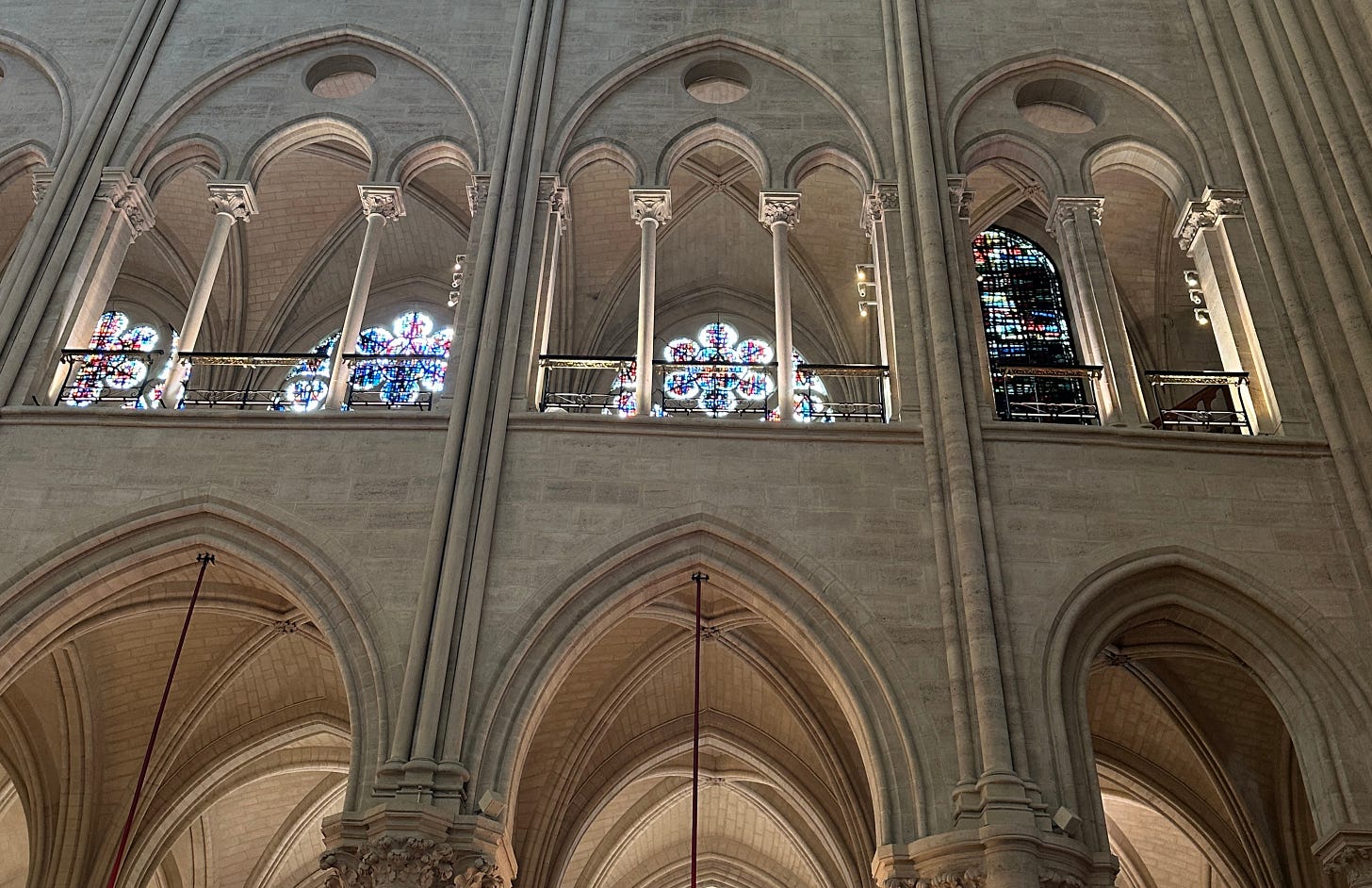
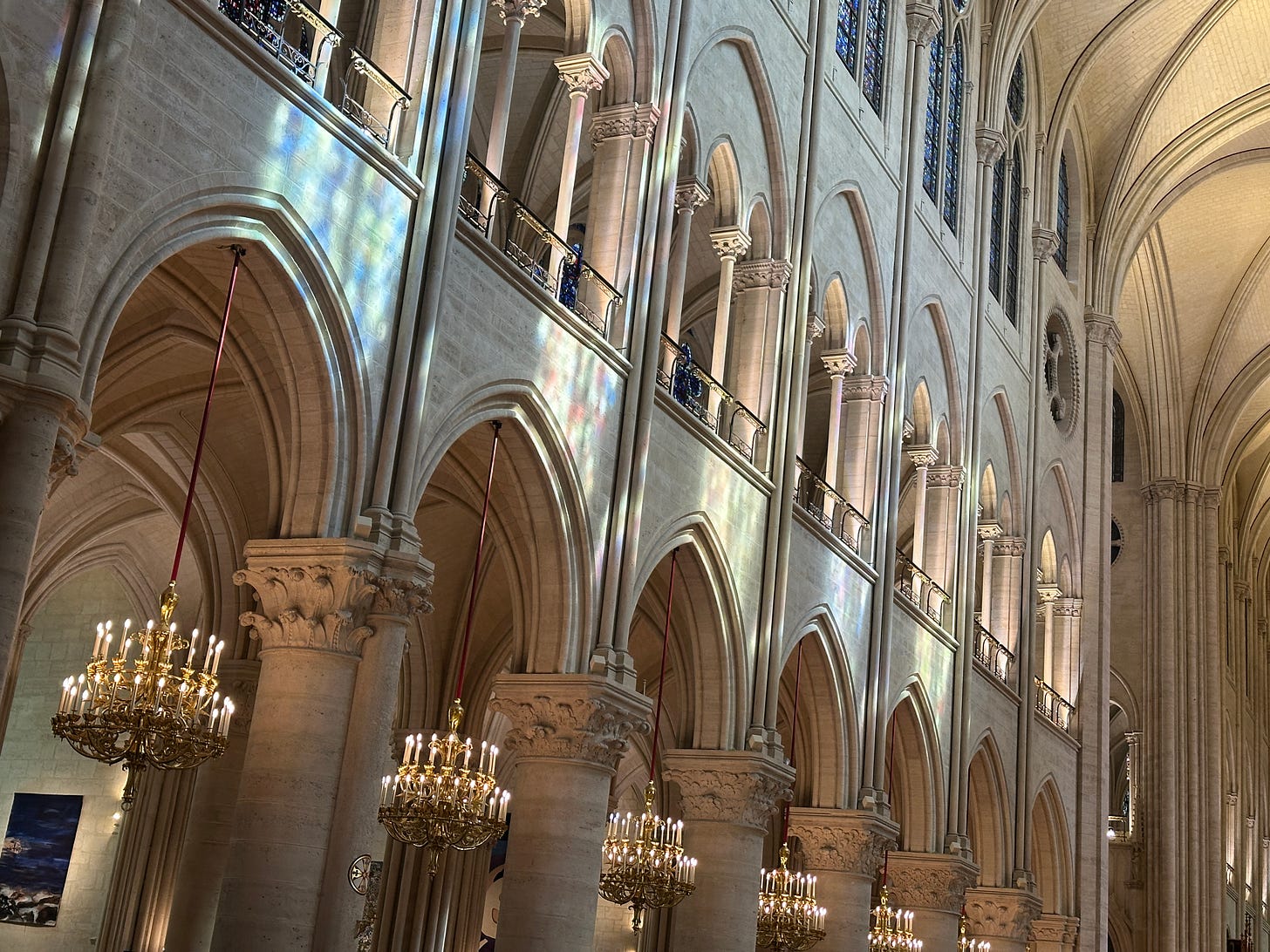

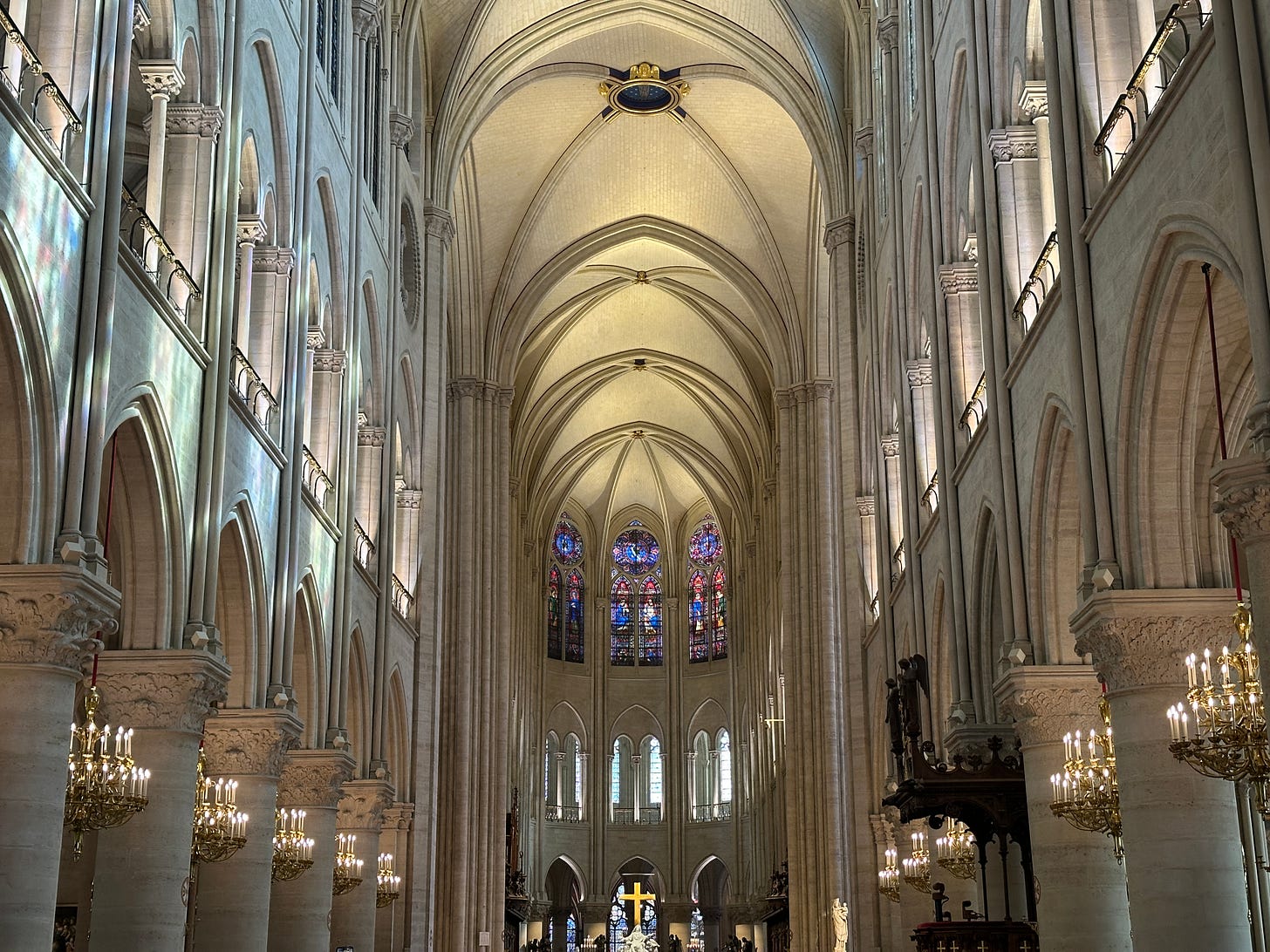


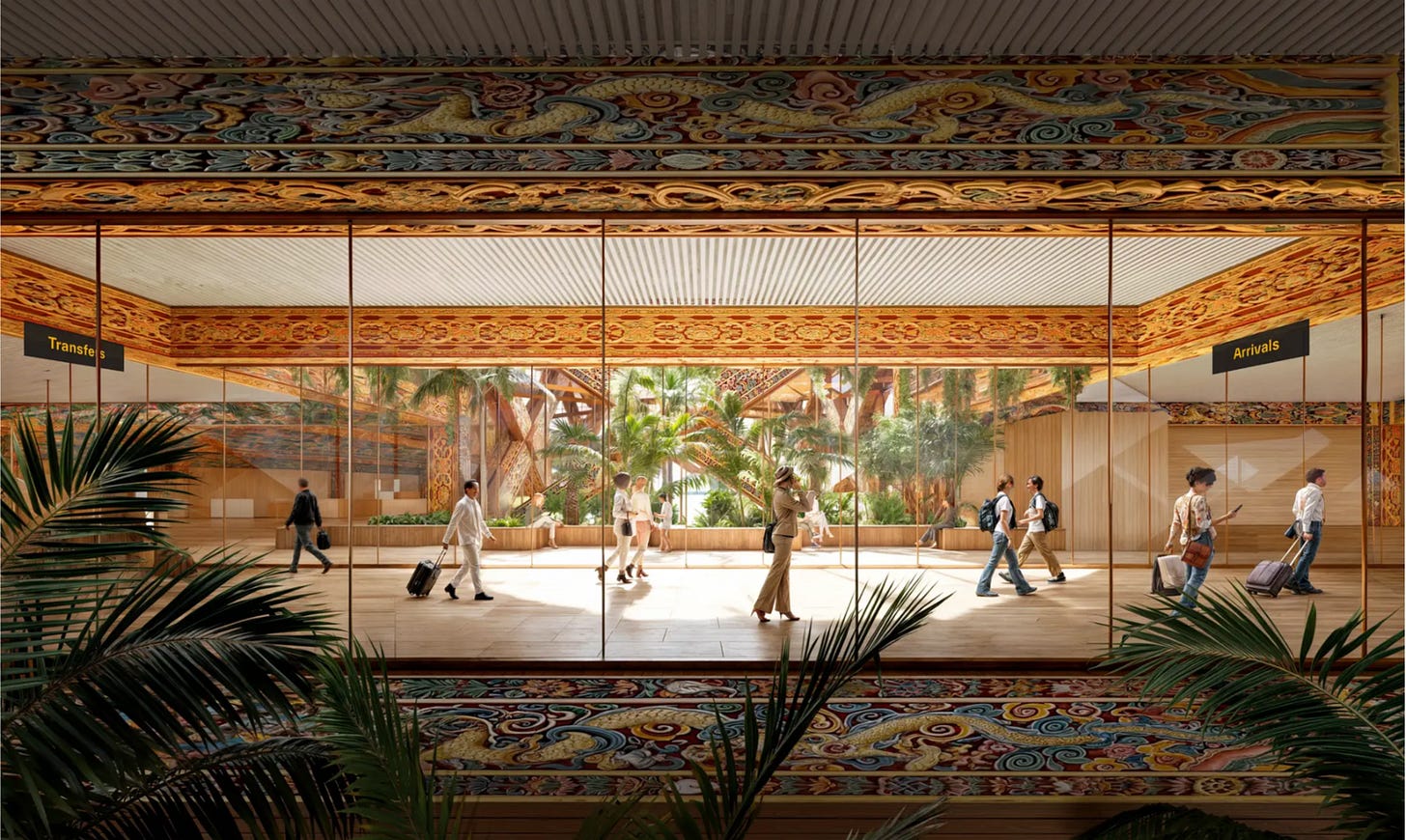
I appreciate the thoughtful take on Notre Dame. People underestimate the power of lighting, but fortunately it’s easier to change than most things. Hopefully they’ll dial it back at some point.